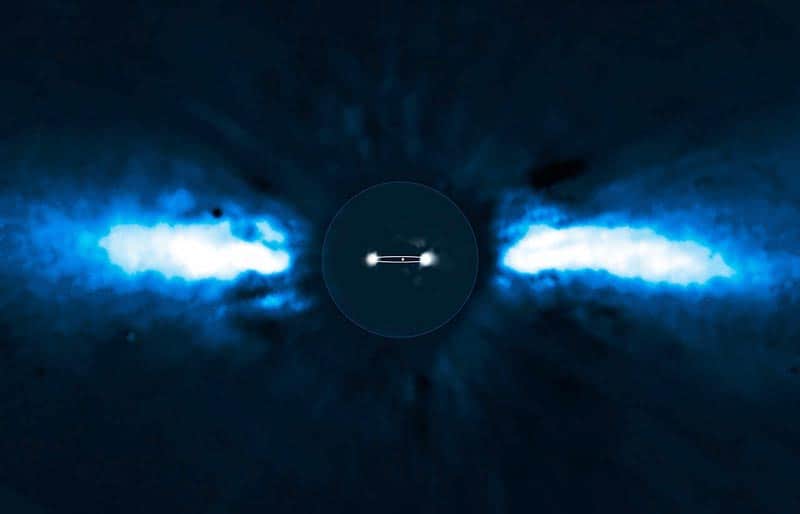
An unusual set of chemical fingerprints spotted in the light from a distant star could be the remnants of a digested planet, according to a new study by researchers in Sweden. In 2017 astronomers making spectroscopic observations of several stars in the open star cluster Messier 67 spotted one – dubbed Y2235 – with elevated levels of certain elements on its “surface”. These included carbon, magnesium and oxygen as well as heavier elements such as cerium, iron and yttrium.
Now, Ross Church, Alexander Mustill and Fan Liu at Lund University have explored how the unusual spectral signature could have arisen. Through calculating the amounts of these elements dusted over the star’s roiling surface, and then modelling how a planet could have delivered them there, Church and his colleagues conclude that what we are seeing are the scattered remains of a planet that is roughly five to six times more massive than Earth.
Chemical fingerprints of the kind detected in the light from Y2235 can be created by means unrelated to planetary destruction. These include the churning effect of a star’s rapid rotation, or gravitational interactions with another star. However, Y2235 is an ageing, Sun-like star that is not thought to spin fast enough for this mixing to take place. Furthermore, the star shows no sign of having a companion star says Church. “A third possibility is that two stars might have collided to have formed Y2235, but that is very unlikely even in a cluster like M67 – only in the richest stellar clusters are direct stellar collisions common,” he adds.
Multi-course meal
The team’s modelling of how the elements might have arrived onto Y2235’s surface suggests the process would have been something of a multi-course meal rather than a quick, stellar snack. In a typical scenario, the planet would have spiralled ever closer to Y2235 over more than six years, only being devoured in its entirety after several hundred orbits.
What could have sent the planet in towards the star is not known, but it might have been gravitational jostling with another planet in the Y2235 system. “Our Solar System is very stable, which is good for us, since the planets have remained on very similar orbits for the last 4.5 billion years or so,” explains Church. “The main reason for this is that the planets are far enough apart that they do not interact with each other much – they orbit mostly independently round the Sun. In a planetary system where planets are closer together they can interact more, and ultimately scatter off one another, and one of the effects of this can be to scatter planets into the star.”

Exoplanet caught on the move
“[The team’s] hypothesis matches the data pretty well,” says Hugh Osborn, an exoplanet researcher based at the Laboratoire d’Astrophysique de Marseille, in France, who wasn’t involved in the new study. He does add a note of caution however. “I won’t be entirely convinced we’re seeing the remnants of a planet, instead of just an anomalously metal-rich star, until we know a bit more about what the average star in M67 looks like.”
Either way, the method of looking for and examining the signs of destroyed worlds in the light from stars could teach us more about distant planets in the future. “We will never know the elemental abundances of our own planet because we can’t dig down to the core,” explains Osborn. “But for an exoplanet that’s been ripped apart and strewn across its star, we can directly measure the average composition of material that was in the planet.”
The research is described in a preprint on arXiv.



